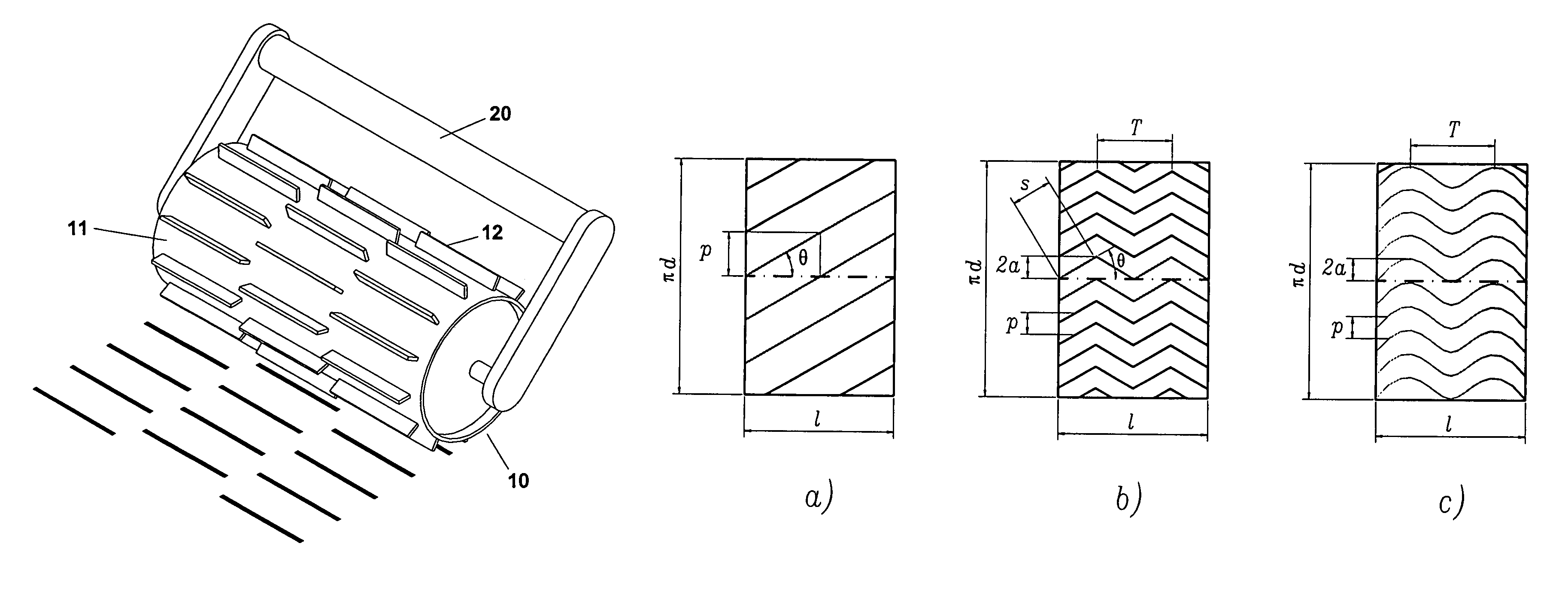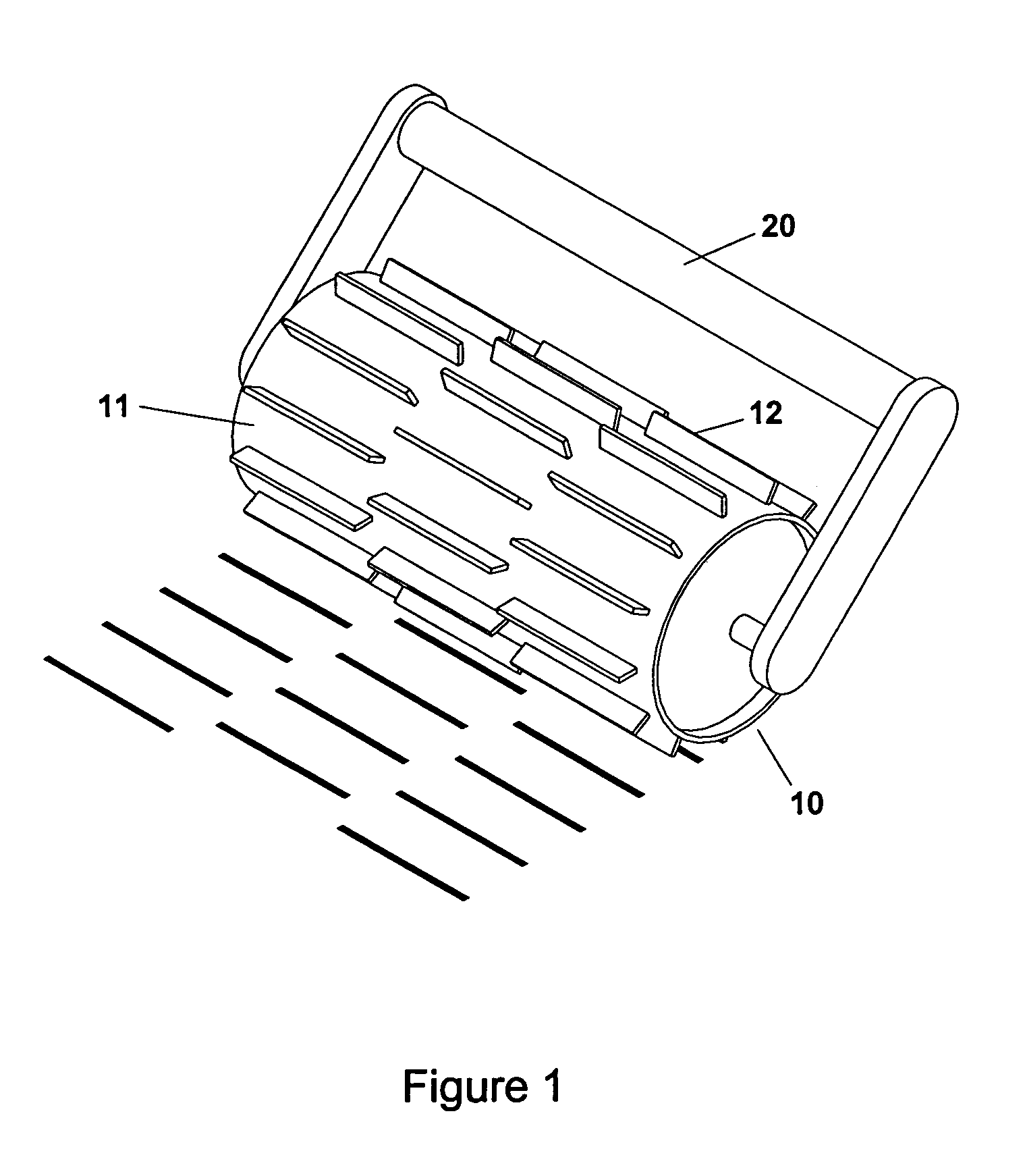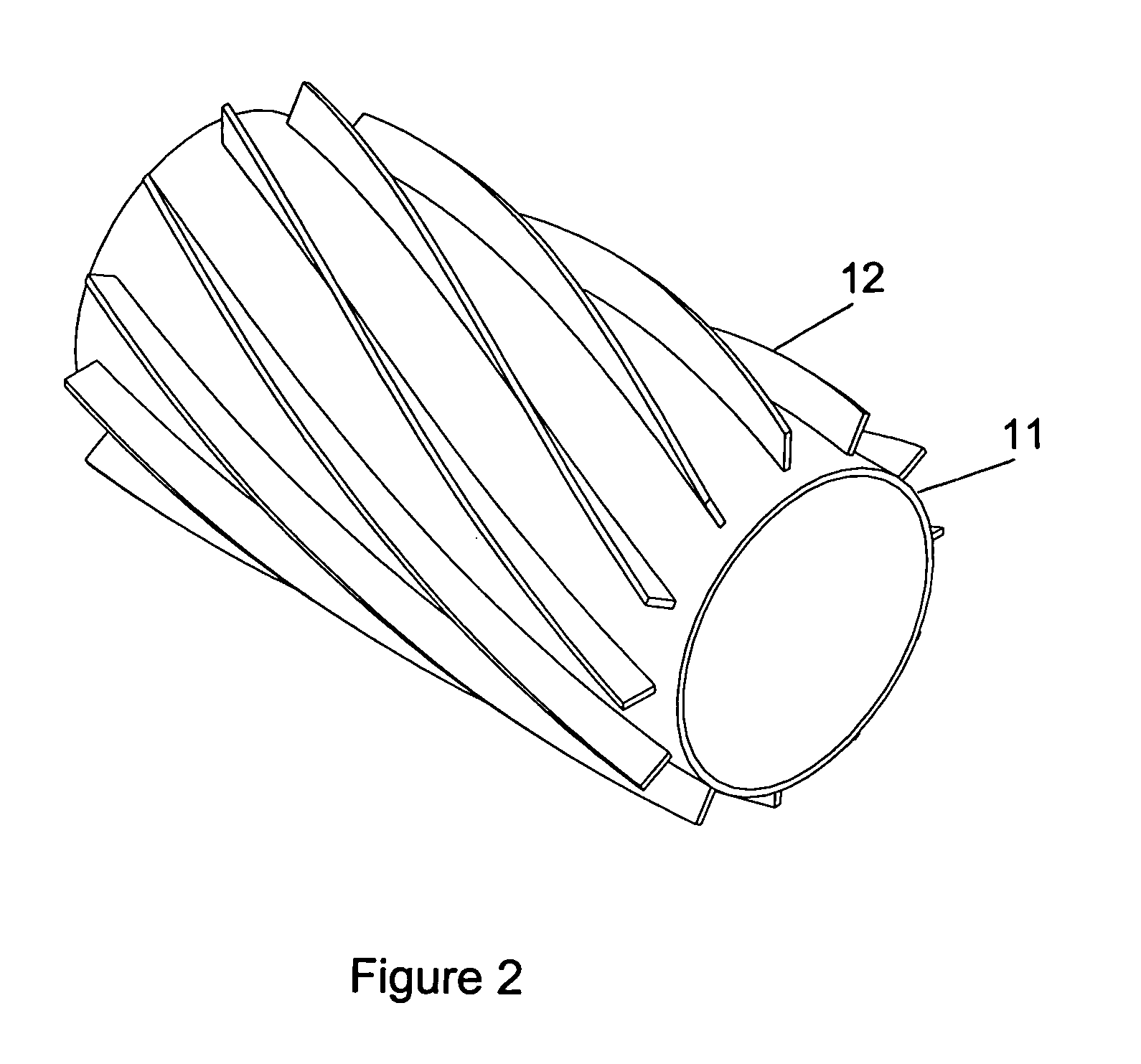Smooth rolling cover crop roller
a crop roller and smooth rolling technology, applied in the field of smooth rolling cover crop roller, can solve problems such as plant death
- Summary
- Abstract
- Description
- Claims
- Application Information
AI Technical Summary
Benefits of technology
Problems solved by technology
Method used
Image
Examples
example 1
[0037]To enhance our understanding of the rolling / crimping process, a series of three experiments were carried out. For the first experiment, an existing prototype roller was used. This roller was a small section of a three-piece roller assembly constructed by Bigham Brothers, Inc. (Lubbock, Tex.). The small roller (1.14 m width×0.41 m diameter) was removed from the larger implement and placed on a category 1 toolbar (ASAE, 1998). A weight bracket was added to the implement so that the amount of weight could be varied.
[0038]The blades on the roller were straight blades of 6.4 mm thickness and 0.10 m height extending across the full length of the roller drum, and were rigidly attached to the roller drum at seven different locations around the drum with a uniform circumferential spacing of 0.18 m. These blades were blunt and were not designed to cut the cover crop, rather they were designed to crimp it and leave it intact. Between the blades, 8.8 cm angle iron was welded onto the roll...
example 2
[0050]A second experiment was conducted to evaluate different blade systems in soil bins. For both the second and third experiments, an experimental roller was designed and manufactured that had the capability of using three different blade systems described below. This implement had a diameter of 0.41 m, a width of 0.91 m, and weighed 341 kg. It was mounted on a category 1 toolbar. This toolbar was mounted on a soil bin car which allowed only the roller to touch the cover crop or soil. The roller was operated at a speed of approximately 1.3 m / s.
[0051]The second experiment consisted of evaluating three different blade types and determining their different vibration characteristics and their crimping capability. The blades were all of 5 cm height and 6.4 mm thickness. This experiment was also conducted in the two outdoor soil bins of the NSDL in a Vaiden silty clay soil and a Hiwassee sandy loam soil.
[0052]To expedite the experiments, a sorghum-sudan grass (Sorghum bicolor, (L.) Moen...
example 3
[0059]The third experiment was conducted to evaluate the different blade systems in the field. This experiment was conducted in the field on a Compass sandy loam soil (thermic Plintic Paleudults) and in a concrete-floored shed at the E. V. Smith Research Station near Shorter, Ala. The experiment consisted of determining vibration information for each of the three blade systems used on the experimental roller used in Experiment 2. These blade systems were: (1) long-straight blades, (2) short-staggered straight blades, and (3) curved blades. Four replications of each blade treatment were conducted on three surfaces: (1) rye cover crop in field, (2) grassed area, and (3) concrete shed floor. The small roller was attached to the JD 4400 tractor and was operated at a constant speed of approximately 1.3 m / s.
[0060]A rye cover crop was grown during winter months of 2002 and spring months of 2003. The experiment was conducted in late April 2003 when the rye cover crop was in a late soft doug...
PUM
 Login to View More
Login to View More Abstract
Description
Claims
Application Information
 Login to View More
Login to View More - R&D
- Intellectual Property
- Life Sciences
- Materials
- Tech Scout
- Unparalleled Data Quality
- Higher Quality Content
- 60% Fewer Hallucinations
Browse by: Latest US Patents, China's latest patents, Technical Efficacy Thesaurus, Application Domain, Technology Topic, Popular Technical Reports.
© 2025 PatSnap. All rights reserved.Legal|Privacy policy|Modern Slavery Act Transparency Statement|Sitemap|About US| Contact US: help@patsnap.com



